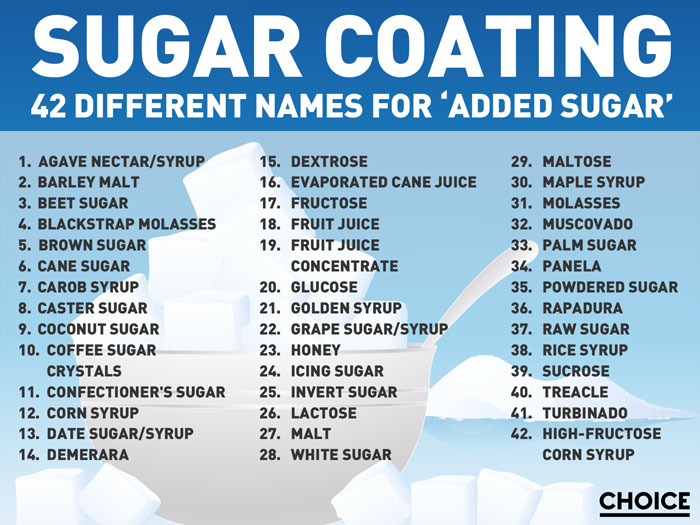End the sugar-coating
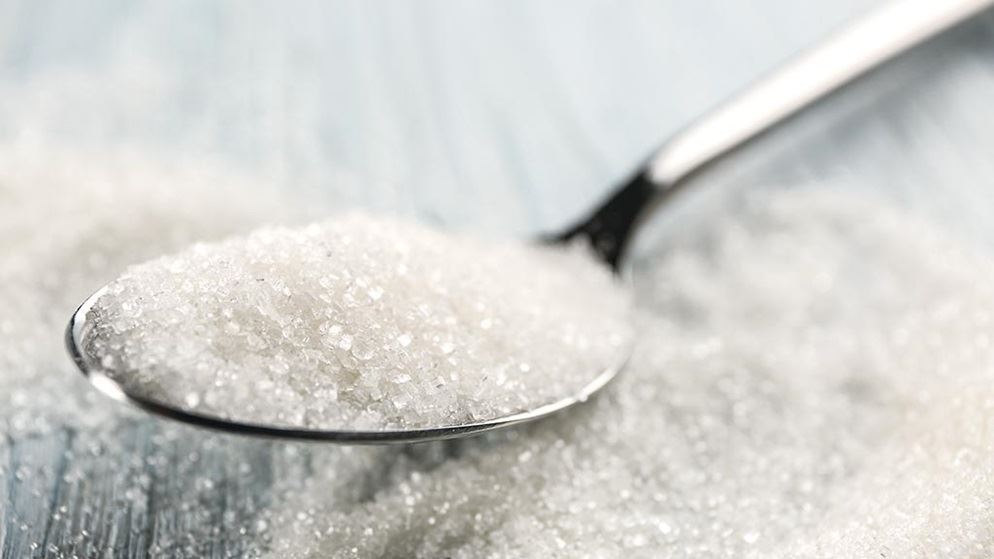
Added sugar is bad for us and health advice tells us we should limit the amount we eat. But food producers aren’t required to label it. And to make matters worse, sugar is hidden in ‘healthy’ foods such as energy bars and fruit and oat clusters too – not just processed junk foods like confectionery and soft drinks.
Many Australians are over-consuming added sugar, but may not even realise it. It’s clear that this situation needs to change.
In this article:
- What are added sugars?
- Added sugar in ‘health’ foods
- What’s really inside the pack?
- CHOICE calls for better labelling
- How to avoid added sugars
- 40+ different names for added sugars
Sugary ‘health’ foods
While on the hunt for a healthy snack at the supermarket, many people would reasonably head to the health food aisle. You know the one – the aisle with all the products claiming to be ‘gluten free’, ‘natural’ or ‘organic’.
What you might not expect to find are so-called healthy products laden with sugar. But we found substantial amounts of added sugar in products presented as good-for-you – in the health food aisle and elsewhere – and in some cases it took some serious sleuthing to determine that this was the case.
- Clif Chocolate Chip Bar, located with other sports and protein supplements, provides ‘nutrition for sustained energy’, but is also 32% sugar in a number of guises including brown rice syrup, cane syrup and barley malt extract.
- Go Natural Twisters Fruit Snack, which we found in the health food aisle, claims to be gluten and additive free. The brand name implies that they’re ‘natural’, but they’re 67% sugars in the form of concentrated apple puree and juice as well as concentrated strawberry juice.
- Uncle Tobys Plus, Peach, Sultanas and Oat Clusters may be “high in wholegrain” and provide “20% of your daily protein”, but there’s no getting away from the fact that its ingredients include multiple added sugars (sugar, invert sugar, malt extract, glucose solids, golden syrup, and honey to name a few), which make up the bulk of its 23% total sugars.
- Weight Watchers Coconut Delight bars are an approved snack under the Weight Watchers weight loss program, but are 37% sugar with invert sugar, barley malt extract and honey all contributing to this total.
A look inside the pack
We analysed the ingredients list and nutrition information panel of some of the foods we found in the health food aisle to show just how much added sugar – compared with other ingredients – they contain.
Go Natural Berry Frugo’s
On the pack: “Goodness tastes better”, “All natural”, “Source of calcium”, “Gluten free”, “No artificial colours, flavours or preservatives”.
In the pack:
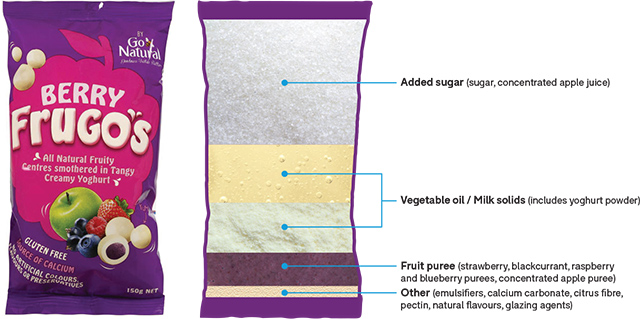
Golden Days Apricot Delight
On the pack: “Natural choice”, “Made with real fruit”, “Gluten free”, “Dairy free”, “No artificial colours”, “No artificial flavours”.
In the pack:
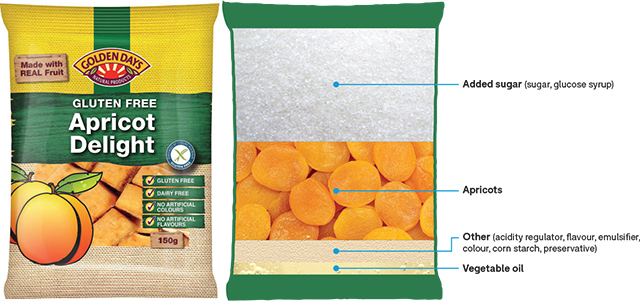
Lowan Cocoa Bombs
On the pack: “Gluten free”, “Low fat”, “No artificial flavours”.
In the pack:
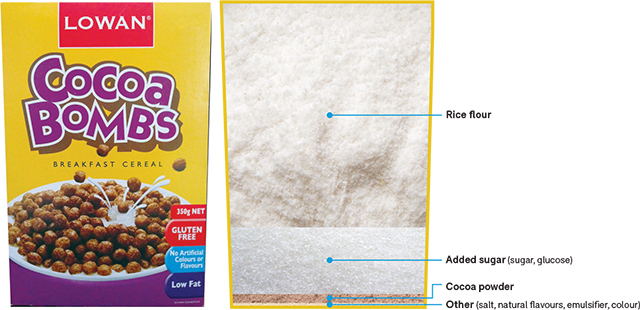
The problem with food labels
Currently there’s no clear way of knowing how much sugar has been added to a food by looking at the label.
You can check the ingredients list to see if a product contains added sugar – the higher up the list, the more sugar the product contains. But added sugars can be disguised under 42 different names and distributed throughout the ingredient list, so they’re not always straightforward to identify and even harder to quantify.
You can also look to the amount of total sugar in a product on the Nutrition Information Panel (NIP). However, this total doesn’t differentiate sugars that have been added by the manufacturer (including glucose, honey and fruit juice concentrates) from those that are intrinsic to the food or one of its ingredients (such as lactose in milk). See What are added sugars for more.
But neither of these labelling elements helps people to easily determine what and how much added sugar is in their food. With so many terms disguising added sugar, and total sugar information sending mixed health messages, it’s evident that current labels are failing consumers.
CHOICE calls for better labelling
We need clear and meaningful added sugar labelling so that we can follow advice to limit added sugar consumption and maintain a healthy diet. There are three main changes we want to see:
- Show the number of teaspoons of sugar in sugar-sweetened drinks. Soft drinks and other sugar-sweetened beverages are the number one contributor to our added sugar intake. Some teenagers are consuming 38 teaspoons of added sugar a day, equivalent to the sugar in four cans of Coke. Identifying the amount of teaspoons of sugar on these products would clearly indicate just how much sugar they contain.
- Make it easy to spot added sugar in the ingredients list. Food companies use over 40 different words for added sugar, including muscovado, rapadura or barley malt extract. We want all added sugar ingredients to be grouped together in the ingredient list so that people can clearly identify them.
- Include added sugar in the nutrition information panel. Currently the nutrition information panel (NIP) only displays total sugars, which includes both intrinsic and added sugar. Intrinsic sugars are found in nutrient-rich foods such as milk, fruit and vegies. These foods are recommended by our dietary guidelines and are part of a healthy and balanced diet. The advice is to reduce the intake of added sugar, which is the sugar added to a product by the food manufacturer. This is why we want the amount of added sugar to be identified separately on the NIP.
The government is currently consulting on improvements to sugar labelling. To have your say on what changes you’d like to see, join our campaign.
How to avoid added sugars
The majority of the sugar we eat comes from processed foods. So labelled or not, the most effective way to curb your added sugar intake (and at the same time improve the nutritional quality of your diet) is to eat a wide variety of fresh fruit, vegetables and other whole foods and minimise the amount of processed foods you eat.
Added sugar FAQs
Different names for added sugar
https://www.choice.com.au/food-and-drink/nutrition/sugar/articles/added-sugar

